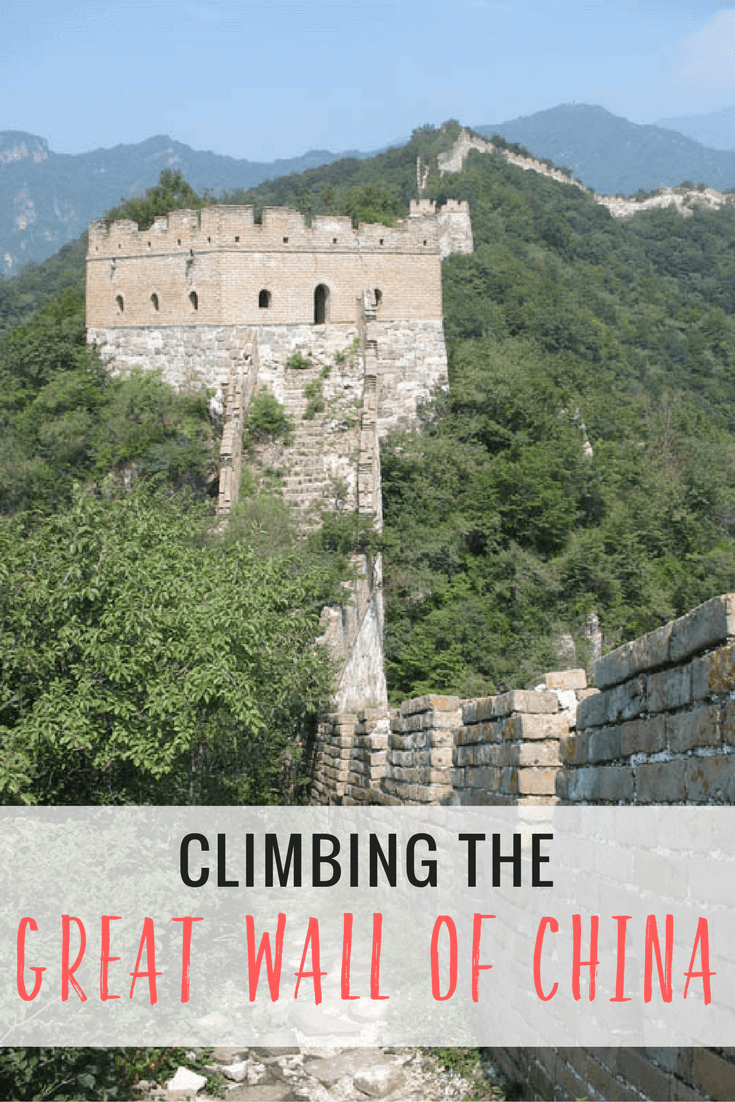This post may contain affiliate links. We may receive a small commission, at no cost to you, if you make a purchase. Read Disclosure.
There are at least 5 major sections of the Great Wall of China near Beijing and each section of the wall is different in character, and attracts a different type of tourist.
When climbing the Great Wall of China, it’s important to know which section of the wall is right for you and what experience you want to get out of the climb.
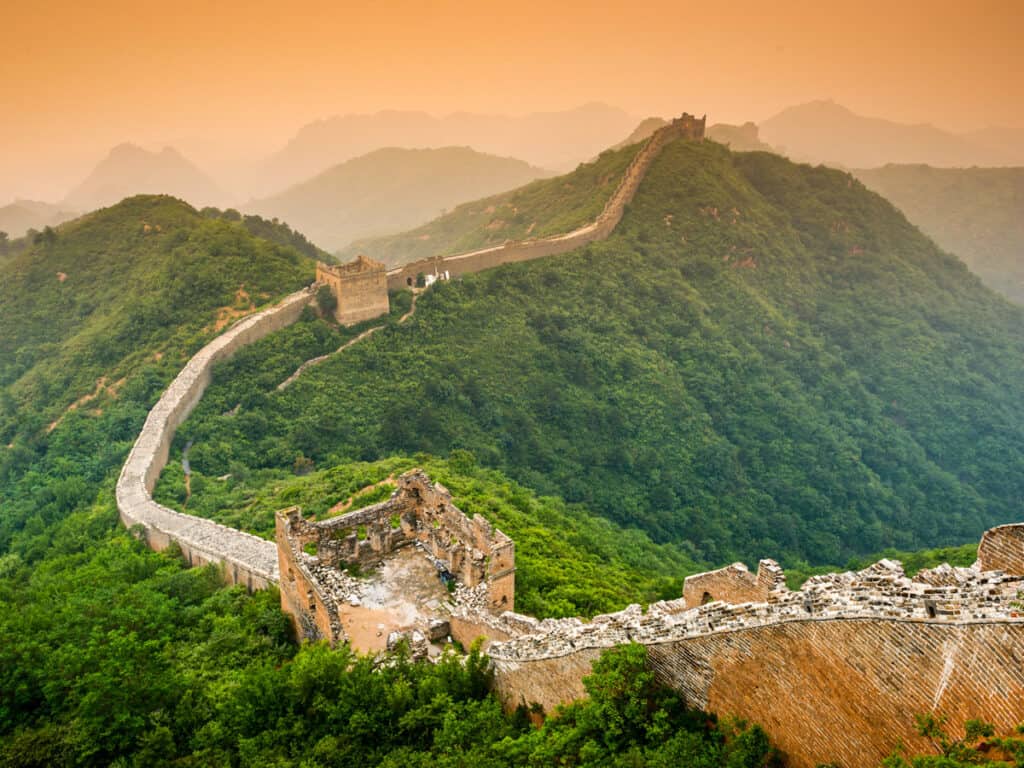
For example, Badaling is easily accessible, immaculately restored and extremely crowded, but then there are sections like Gubiekou that are hard to reach, largely in ruins and fairly isolated.
If you want to get off the main tourist trail and get the true experience of the wonder and explore a more urban, off-the-beaten-path section of the Great Wall, then you’re going to want to visit Jiankou.
This 20km stretch of the wall is non-ticketed, has not been restored, and is less visited by tourists – all the more reason to visit.
In this guide, I’ve shared details about each section of the Great Wall of China and how you can climb the Jiankou section.
The Sections of The Great Wall of China
Climbing the Great Wall of China is a bucket list experience for most, so it’s important to do it right. Here is an overview of each area of the wall you can climb.
Badaling
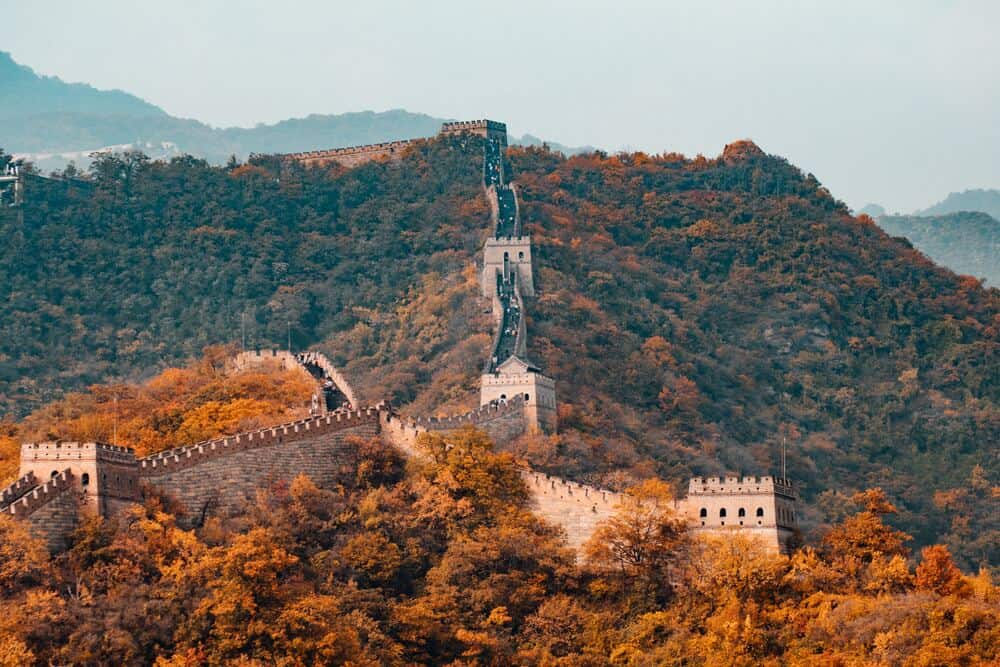
Badaling is the most famous section of the wall to climb, since it’s the closest to Beijing (about 80km away). This section of the wall was built in 1505, at the time of the Ming Dynasty and is the most renovated area of the wall.
It was built to protect the Juyongguan Pass and the city of Beijing from invaders, as well as being a border control for Silk Road merchants.
This part of the wall has undergone restoration and was the first section to open to the public in 1957.
Although busy, Badaling is 4.7 miles of historical monument that really showcases the mystique of this expansive piece of construction. Really the only downside to visiting Badaling is the people, but you can avoid this by waking up early and being the first person to the wall.
It’s easy to get to, you can simply catch a train from Beijing to Badaling. It’s become hugely touristy nowadays and is lined with hotels, ever-present souvenir hawkers, restaurants serving western-styled food and even a cable car.
Simatai
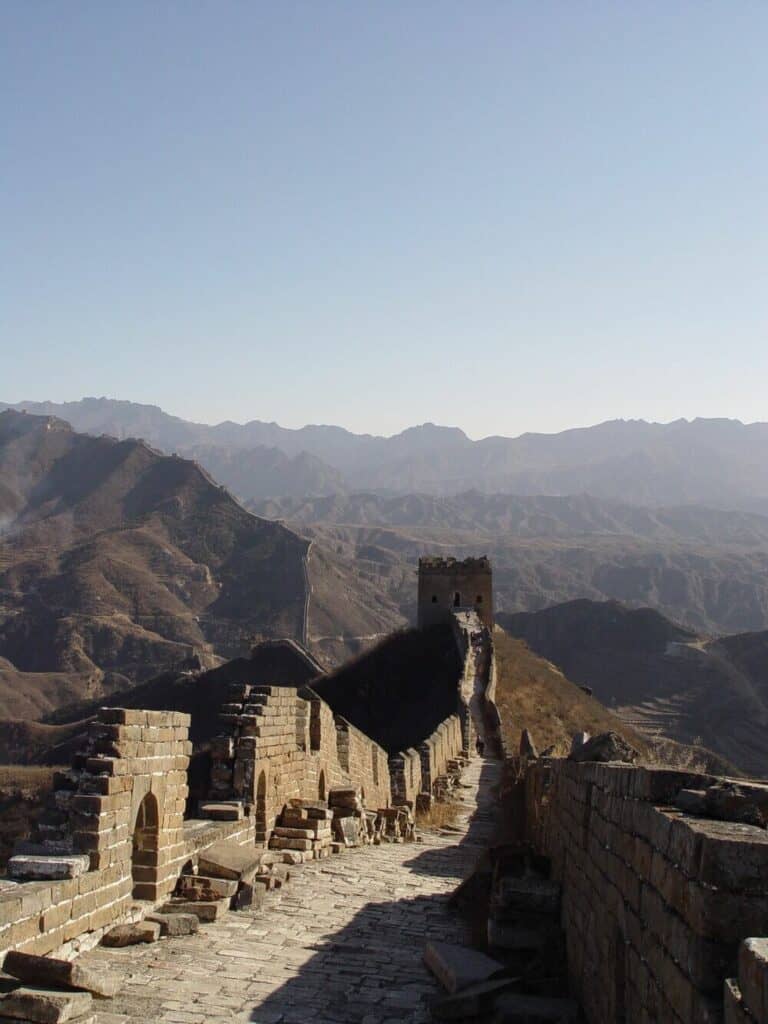
Located in the north of Miyun District, 120 kilometers northeast of Beijing, is the Simatai section of the Great Wall of China.
This section dates back to 550–577, to the time of the Northern Qi Dynasty, and was rebuilt by Hongwu Emperor in the Ming dynasty.
Simatai’s Great Wall is a lot smaller than Badaling but is still largely well preserved. It spans for 5.4km and has a total of 35 beacon towers and watch towers.
It also has several passageways and garrison stations that were used during raids.
This part of the wall has been recognised as a UNESCO World Heritage Site.
What’s unique about Simatai is the terrain. Nestled in the Yan Mountains, it’s a steeper section of the wall and even has open-air gondolas to help the hordes of tourists ascend part of the wall.
Gubeikou
Gubeikou is also located in the Miyun District in northeastern Beijing, and this section of the wall was used as an ancient checkpoint between Northeast China and Beijing.
The wall here has not been reconstructed and has largely been reclaimed by nature. It’s harder to access but that means less tourists.
It stretches for 40 kilometers and has 172 watchtowers and 14 beacon towers.
It was first built in 550-557 at the time of the Northern Qi Dynasty but was rebuilt by General Xuda in the early Ming Dynasty.
Jiankou to Mutianyu
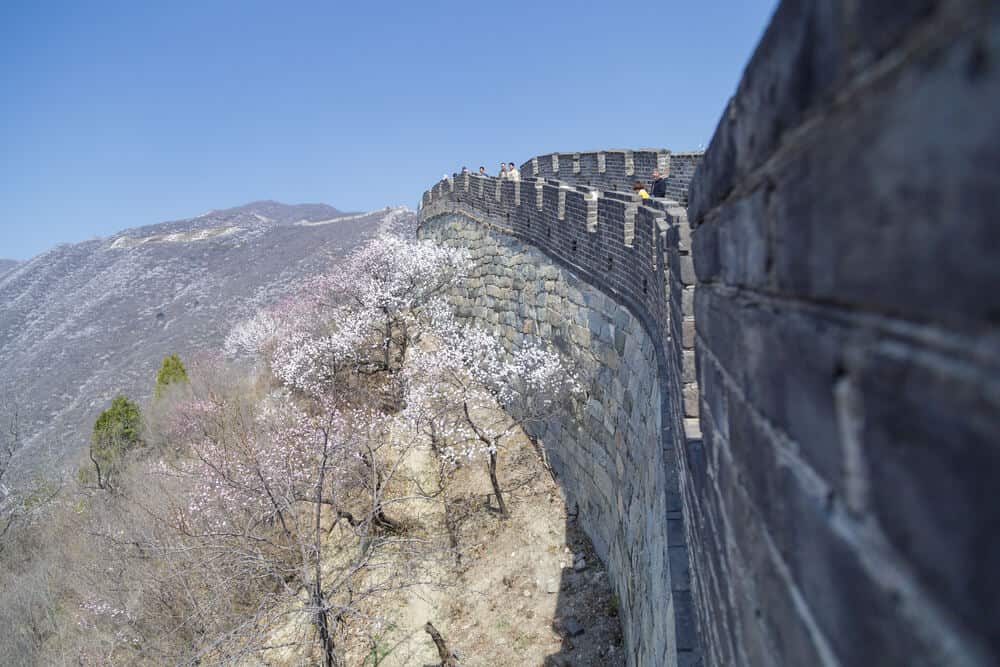
After visiting the more well-known sections of the Great Wall, I was ready for some hard core wall hiking.
I was ready for Jiankou.
The Jiankou section of the Great Wall, which is extremely difficult and dangerous to climb in some sections, joins the Mutianyu section of the Great Wall (the second most preserved section of the Great Wall).
It has incredible vistas, undeveloped sections, a dense area of reclaimed wall, and is very hard to access and a must do for any serious Great Wall enthusiast.
Basically walking the Jiankou section is an adventure that no other section of the Great Wall can provide, and is the best section to visit if you don’t have the tolerance for crowds.
Jiankou is a Ming Dynasty section of the Great Wall and built in 1368 along steep mountain ridges and tall cliffs.
In these areas where the wall has been destroyed by natural degradation, the only way up or down the wall is over crumbling ruins with very steep climbs or vertical surfaces.
The plan for Climbing the Great Wall of China
The Jiankou section of the Great Wall stretches from the Nine Eye Tower (Jiu Yan Lou) in the north to Zheng Bei Lou in the south-east and has around 22 towers.
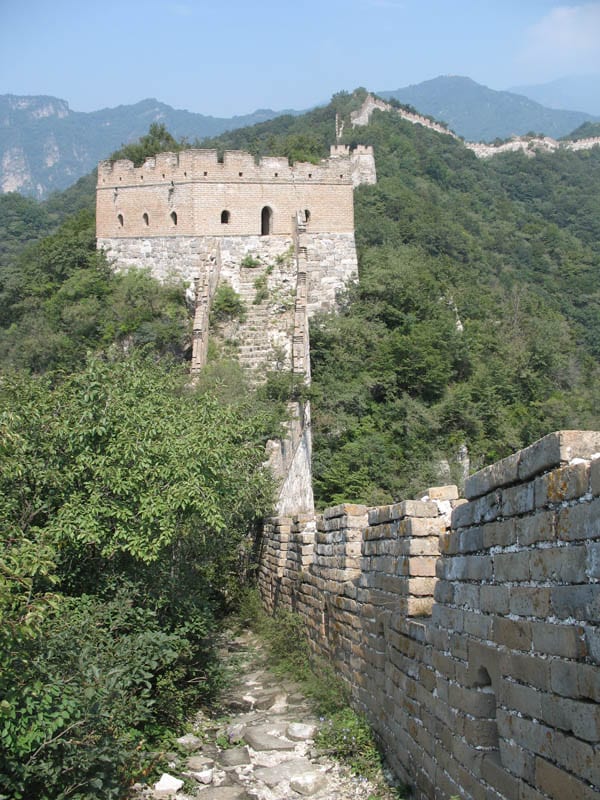
I heard that Jiankou does not take more than a few hours strenuous walk so my plan was to hike from the Nine Eye Tower past Zhengbeilou towards the Mutianyu section.
If I could not reach the Mutianyu section by 4 or 5pm, I’d stop at that time, leave the wall and make my way back to Beijing.
This plan sounded nice in theory but did not work in practice.
Getting to Jiankou section of the Great Wall of China
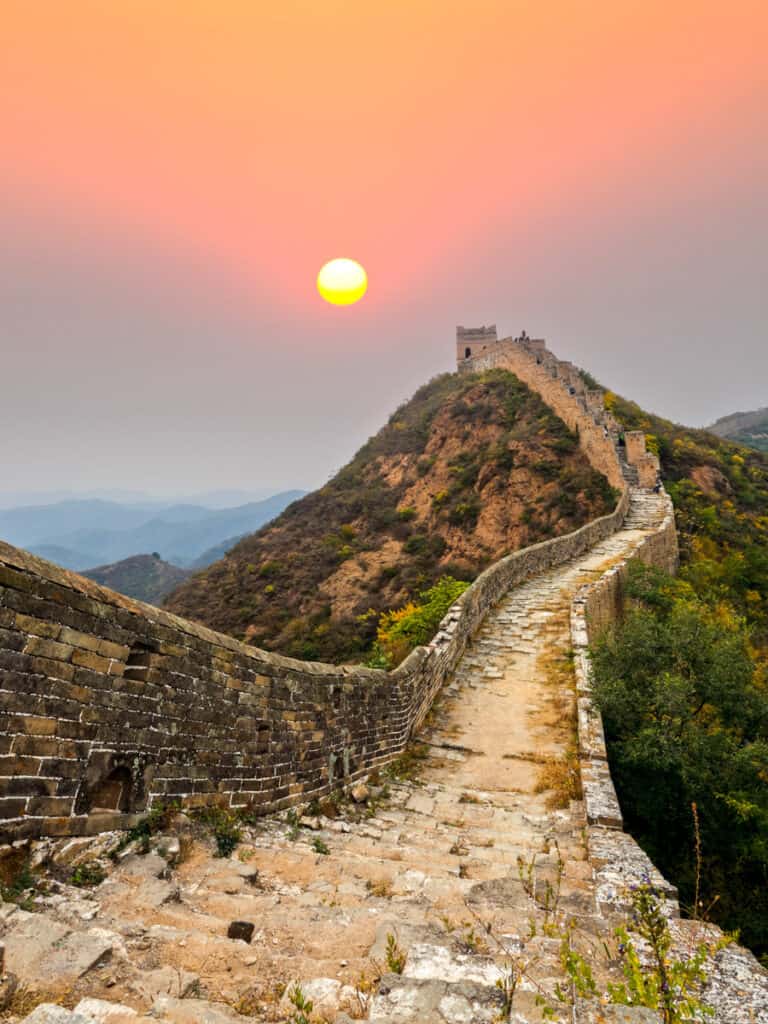
The starting point for hiking Jiankou is a small village called Xi Zha Zi that is around 75-80 kilometers north of Beijing and hard to reach.
To get to the village you first catch the subway to Dongzhimen station on line two then catch the 916 express bus at Dongzhimen Wai long distance bus station.
The bus station is right next to exit B at Dongzhimen station and hard to miss.
The 916 express bus takes around 90 minutes and terminates at a small city called Huairou where you get off at the last stop. From Huairou you catch a taxi to the village and the taxi ride takes just over one hour.
At Huairou, you’ll be mobbed by black (unofficial) taxi drivers as soon as you step off the bus who will all want to take you to the Great Wall.
They will probably offer to take you to the village for around 200rmb which is way too much. A fair price is around 100 to 120rmb so don’t pay more.
I ended up paying 80rmb after half an hour of haggling and the taxi was a small old rust bucket with a tiny fuel efficient engine.
The drive from Huairou to the village is through the mountains and very enjoyable with gorgeous scenery.
The taxi driver Mr Ma told me there was no way I’d make the hike from Nine Eye Tower to Mutianyu so we agreed that either he or one of his buddies would pick me up in the afternoon near the Zhengbeilou.
From the Village to the Great Wall of China
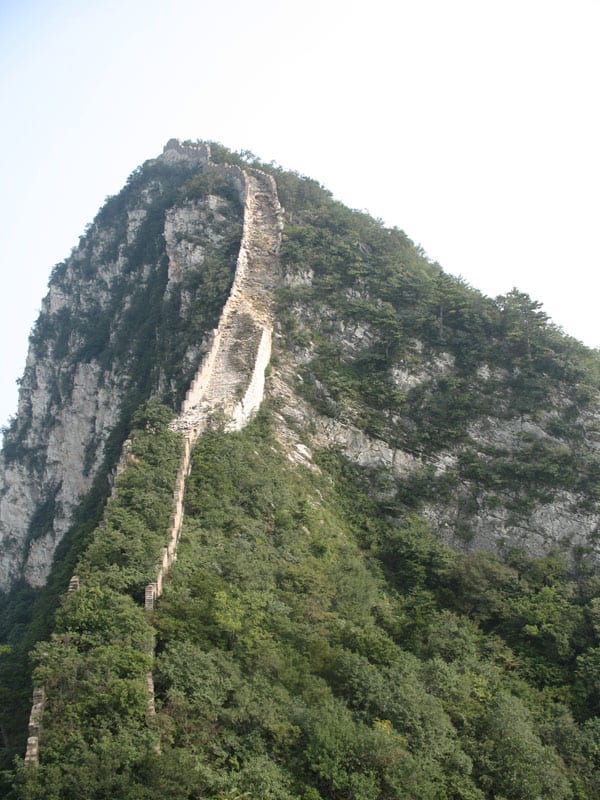
The village is small and only has a population of around 300 people who are mostly farmers. Walking through the village is a great way to see a side of China that most tourists never experience.
Once you pass through the village, there are a number of paths you can take and only one of the paths heads towards Nine Eye Tower.
I had to ask for directions three times to find right path. The locals are friendly so if you are not sure, ask for “jiu yan lou” or just point at the wall which is clearly visible I the distance look lost.
Looking lost was not hard to do and worked for me.
Once you are on the path, the way to go is clear and you will have no problem reaching the wall.
The path goes through very heavy scrub and reaches the wall north of Beijing Knot after 30 minutes of walking, and then I was on top of the Great Wall of China!
What Does the Jiankou Wall Look Like?
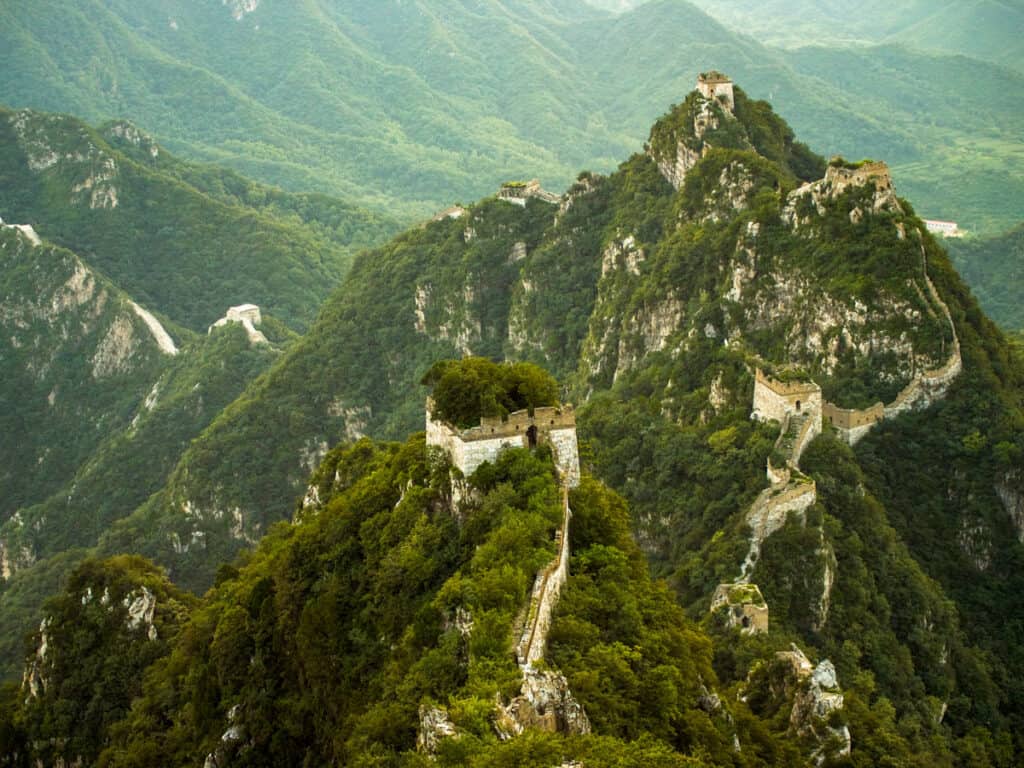
The wall was nothing like what I expected and these three words sum the wall up perfectly.
Overgrown, dangerous and awesome. There is also a lot less foot traffic here as I barely saw anyone.
I estimate that at least 80% of the Great Wall was intact with the battlements and the road/path between the battlements in surprisingly good condition.
The main areas where the battlements and the road were in ruins or had been destroyed was in the very steep sections south of the Beijing Knot.
Overgrown
Walking the intact sections of the Great Wall of China would have been very easy if those sections were not overgrown.
I’m not talking about a few weeds and the occasional shrub. I am talking about serious overgrowth with very thick shrubs, grass, weeds and small trees.
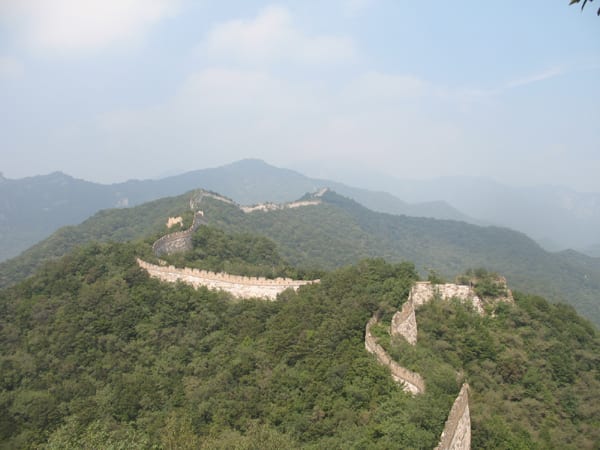
Walking the wall in these parts was like walking through a jungle with the sky blocked by foliage and no sense of direction. The path through the jungle was very narrow, and in some parts, you had to squeeze through entangled shoots and branches.
I’ve seen the wall restored and in immaculate condition, in complete ruins and in various states of disrepair, but I have never seen a relatively intact wall like the Jiankou section that was so overgrown and covered in vegetation.
This part of the wall does not need restoration. It needs weeding. Badly.
Dangerous
I always thought that Jiankou’s reputation for being dangerous was exaggerated but I was very wrong.
The northern section of Jiankou from the Nine Eye Tower to the Beijing Knot is safe and easy to walk.
The section from Beijing knot to Zhengbeilou is extremely dangerous with three areas where the wall has been destroyed and you have to use hand and foot holds to climb up.
Like rock climbing without the safety rope.
One of these sections is especially dangerous and so steep that the surface of the wall is basically vertical.
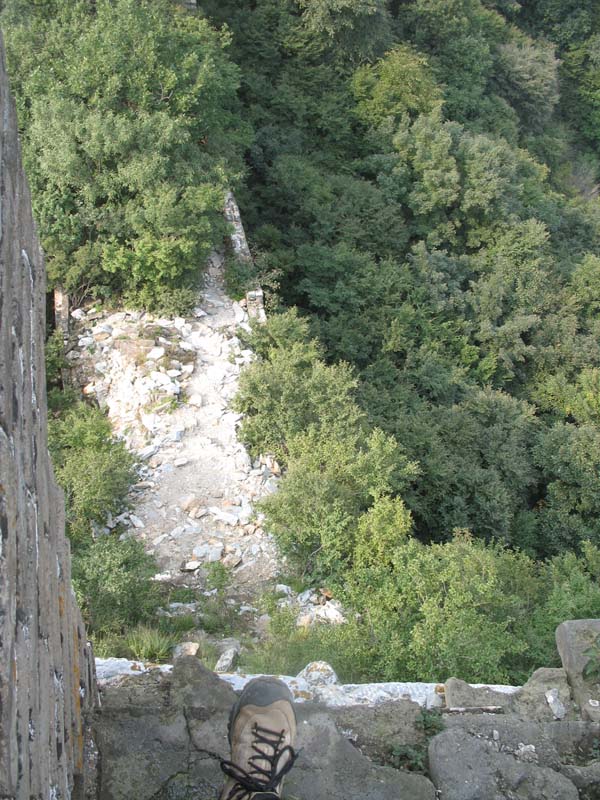
Being stupid and reckless, I climbed all the dangerous sections, even the vertical section.
I was half way up vertical section and running out of hand and footholds when it finally occurred to me the dangerous the wall was in and how stupid I was to try and climb it.
There were various times when I thought about turning back, but the views and thrill of it all kept me going.
Plus, at this stage, climbing back downhill was much more dangerous than continuing so I ignored the drop below, stopped thinking about how the bricks and rocks I was clinging to were laid over 600 years ago, resisted the urge to panic and kept climbing.
The drop from these steep sections can be over 6 meters and the bottom is rock and brick so if you fall, you are going to break something and will definitely not be walking away.
Jiankou is an extremely isolated section of the wall and I only saw two other people that day.
If you hurt yourself there, you may not get help for a long time and the nearest hospital is hours away. People have died climbing Jiankou so be aware of the danger and be careful.
Getting Back to Beijing from Jiankou
Walking and climbing Jiankou took much longer than expected so I could not even reach Zhengbeilou.
In the end, I ran out of time and had to leave the wall at Lian Kou at around 4:15pm. The walk from the wall down the mountain to the pickup point took around 45 minutes.
I called Mr Ma on the walk back to let him know I was on my way and he said one of his buddies would be there.
I reached the pick up point and there was no driver, so I called Mr Ma again who said no one was coming to pick me up, hung up on me and refused to take any more calls.
Wow.
So what do you do when you are stuck in the middle of nowhere with the sun setting?
Start walking, stick your thumb out and hope for a lift.
After around an hour of walking, I managed to catch a lift with a very friendly family from Beijing who were great.
They dropped me off at a bus stop on a some main road and I caught a bus an hour later to Huairou.
By that time were no more buses to Beijing so I found a taxi and negotiated a lift to the nearest Beijing subway station for 80rmb. I eventually arrived back at the hostel at 11pm.
An exciting end to an exciting day. Despite the challenges, it was still a whole lotta fun.
Where to stay in Beijing
- For sightseers, the area east of the Forbidden City is full of cheap accommodation.
- For hostels, there’s the well located YHA Peking International Youth Hostel.
- For a budget hotel, friends have enjoyed the modern Hotel Kapok, again right next to the Forbidden City.
- A couple of blocks east you come to Wangfujing where the high-end hotels are clustered.
- The Mandarin Oriental is a personal favourite, and towers over DongHuaMen night market (due to reopen n 2016). Alternatively, look for a family-run traditional courtyard hotel in the same area.
- If you’re going to be spending every night in the bars, it would be more convenient to be over by Sanlitun, where you’ll find most of the expats and backpackers hanging out in Bar Street.
Tips for Climbing the Great Wall of China
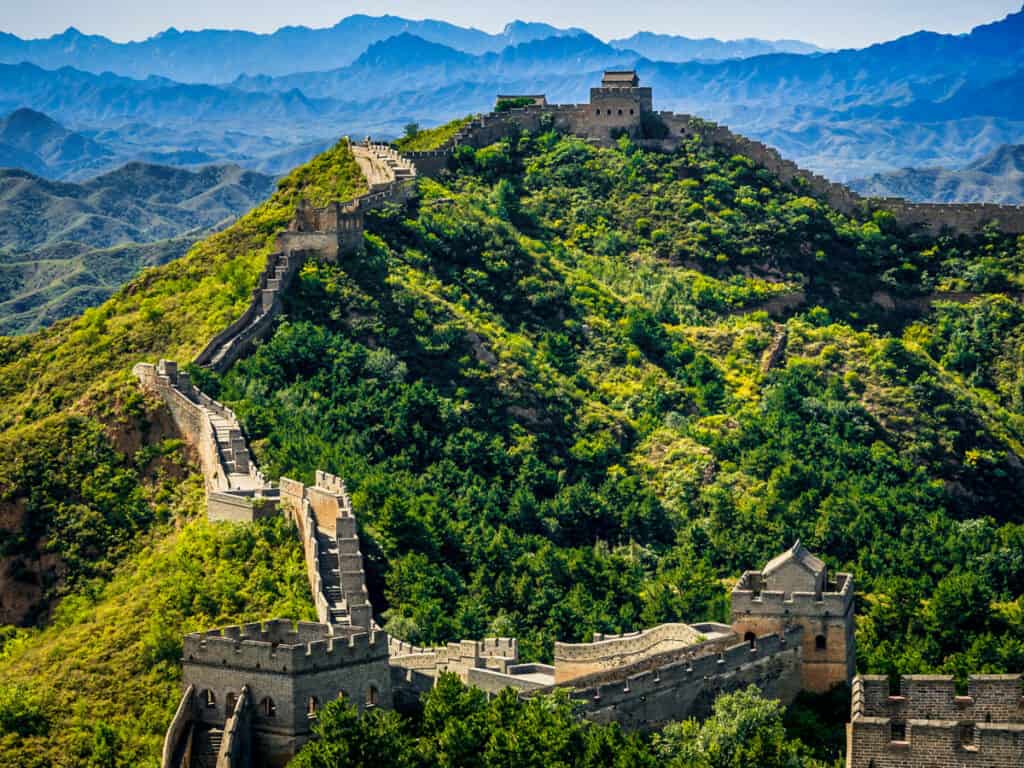
Before you go, here are some words of advice to help your climb run smoothly.
- It can be quite a workout climbing the wall, so wear loose trousers and leave your denim at home.
- Wear comfortable shoes such as sneakers or hiking boots. Heels, wedges, and open-toed sandals are not appropriate.
- Wear clothing in layers so you can take them off. It can be cold when you start but when you hike, perspiration sets in and you’ll want to cool down. Wear a light sweater.
- Bring your own snacks as refreshment stands are expensive.
- There are no facilities such as bathrooms along the wall, so try not to overdo it on the water intake so you don’t have to take regular bathroom breaks. There is a bathroom at the ticket office entrance to the Badaling section.
- Be aware of the occasional pickpocket. This isn’t usual at the Jiankou section, more the busier sections such as Badaling and Simatai.
- Visit early in the day to avoid the bus loads of people who turn up around 10am.
- An important note of caution, remember the wall is the result of mostly manual labor 600 years ago by an ancient Chinese civilization, and therefore it’s not the sturdiest of structures in places. Always watch your footing, don’t take any risks, and be mindful not to cause any damage to the wall.
- You can also get really cheap eSims from Airalo. You can set it up so it’s ready to go as soon as you arrive. That way you don’t have to worry about finding a local sim card. See prices and availability here.
Best Time to Visit The Great Wall of China
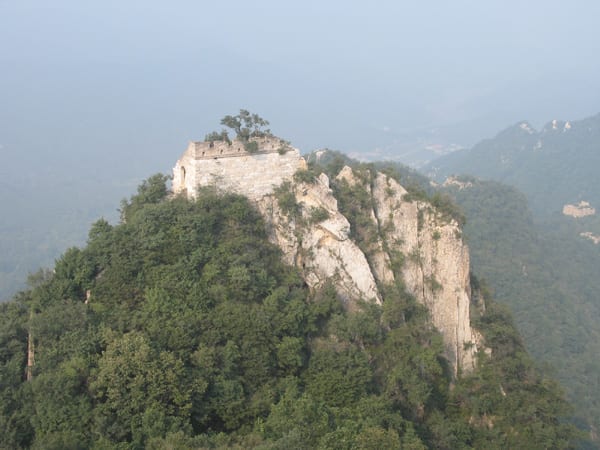
When it comes to visiting the Great Wall of China, timing can make all the difference in creating a memorable experience.
Arguably the best times of year to visit is during the spring months of March to May.
This season offers ideal conditions in terms of weather for exploring this great engineering feat.
Not only will you avoid the blistering summer heat and the bitter cold of winter, but you’ll also have the advantage of fewer crowds compared to the peak tourist season from June to August.
The shoulder seasons of May and September to early October are also a good time of year to visit to avoid a lot of avid hikers.
Spring also brings better light conditions for photography and more daylight hours for exploring, as well as blooming landscapes, allowing you to experience the grandeur of the wall with a backdrop of breathtaking scenery.
Final Thoughts
It is said that Zhengbeilou is one of the most popular sections of the Great Wall of China for photography and with high altitudes of up to 991 meters, the jaw-dropping views and scenery are fantastic.
I was unfortunate not to make it that far on this Great Wall trip due to my lack of knowledge and know-how, so hopefully this guide will help you prepare better so you can make the entire journey.
My next Great Wall of China trip will be to walk from Zhengbeilou all the way to Mutianyu.
More Tips for Traveling in China
Need more inspiration for your trip to China? Here are some other guides!
- Key Things to know before you visit China
- Tips for First Time Visitor to Beijing
- What to Do in Beijing
- Things to Do in Shanghai
- 2 Week China Itinerary
Save this to Pinterest
